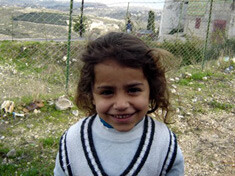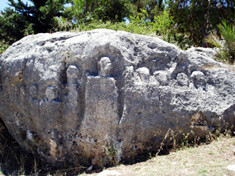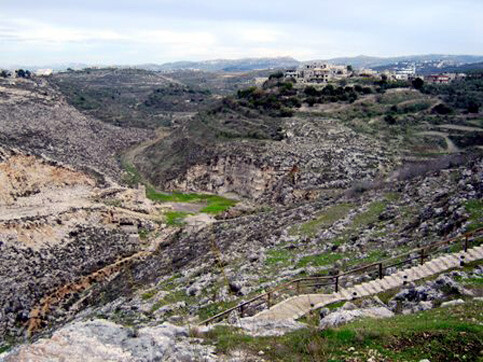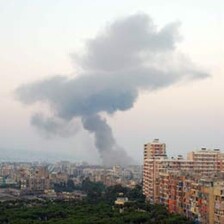Beirut 30 July 2006

A memorial for those murdered by Israel in 1996 (Patrick McGreevy)
We visited Qana six weeks ago. To get there from Beirut, you pass through Tyre and then head southeast. The village clusters about a hilltop less than eight miles from Lebanon’s southern border, and about thirty miles from Nazareth. There is a scholarly debate about whether this was the site of the Wedding at Cana, where Jesus is said to have performed his first miracle, creating wine from water. The Roman historian Eusebius and St. Jerome both believed this was the place. There is no doubt that Qana was an early Christian site. For those schooled in Hollywood movies and religious picture books, this is a Biblical-looking landscape that exceeds all expectations. On a hillside overlooking a stony valley are rock carvings depicting the bride (presumably from the Wedding at Cana), the Nativity, the Last Supper and other central scenes of the Christian story. There is also a cave, where a guide will tell you, Christ’s followers hid from their persecutors. On our first journey to Qana a year earlier, we had looked in vain for the stone wine jars, when a boy and girl on a donkey had instructed us to follow them. I later photographed the girl. Now I wonder about her whereabouts and her safety.

One of Qana’s hospitable residents (Patrick McGreevy)

A carved stone at Qana (Patrick McGreevy)
The village itself is a bustling place. Its other attraction is the scene of a massacre. In 1996, during Israel’s last serious attempt to crush Hezbollah, the IDF had bombed a UN shelter near the center of Qana, killing 102 refugees. They called their attack “Operation Grapes of Wrath.” Timor Goksel, the former head of the UN mission in Southern Lebanon, does not believe that the Israelis intentionally targeted these civilians. But their deaths certainly betray a lack of concern for Arab civilians, a lack of attention. Jesus told a parable about a man beaten and lying by the roadside; many people passed by but did nothing; they did not target the man, but neither did they notice his suffering. Lebanon remembers this massacre every April 18 with a day of mourning. A monument of long sarcophagi now dominates the site. The event brought a rapid end to the 1996 conflict. Now Lebanon has another tragedy, another date, another site in Qana to memorialize. Grief is overflowing. For the first time during this 2006 war, there was a civil disturbance in Beirut that lashed out at the UN office.

Qana’s biblical-looking landscape (Patrick McGreevy)
Two thousand years ago, a young man reluctant to begin his public life, attended a wedding. His mother noticed that the hosts had run out of wine and turned to her son for an act of kindness. “They have no wine,” were her only words. Three years later, as he raised a cup of wine, he said: “this is my blood.” Wine, and wrath, and now more blood. Lebanon and the world watches as the dusty bodies of children are lifted lifeless out of the rubble. Does anyone still believe in the redemptive power of innocent blood? Must we compare tragedies? The ones at Auschwitz and Birkenau with those at Qana and Tyre with those at Haifa? Does punishment prevent them from recurring? We are all experts, it seems, at the psychology of our enemies. Where are the experts at attention?
Patrick McGreevy heads up the American Studies Program at the American University of Beirut.
Related Links





